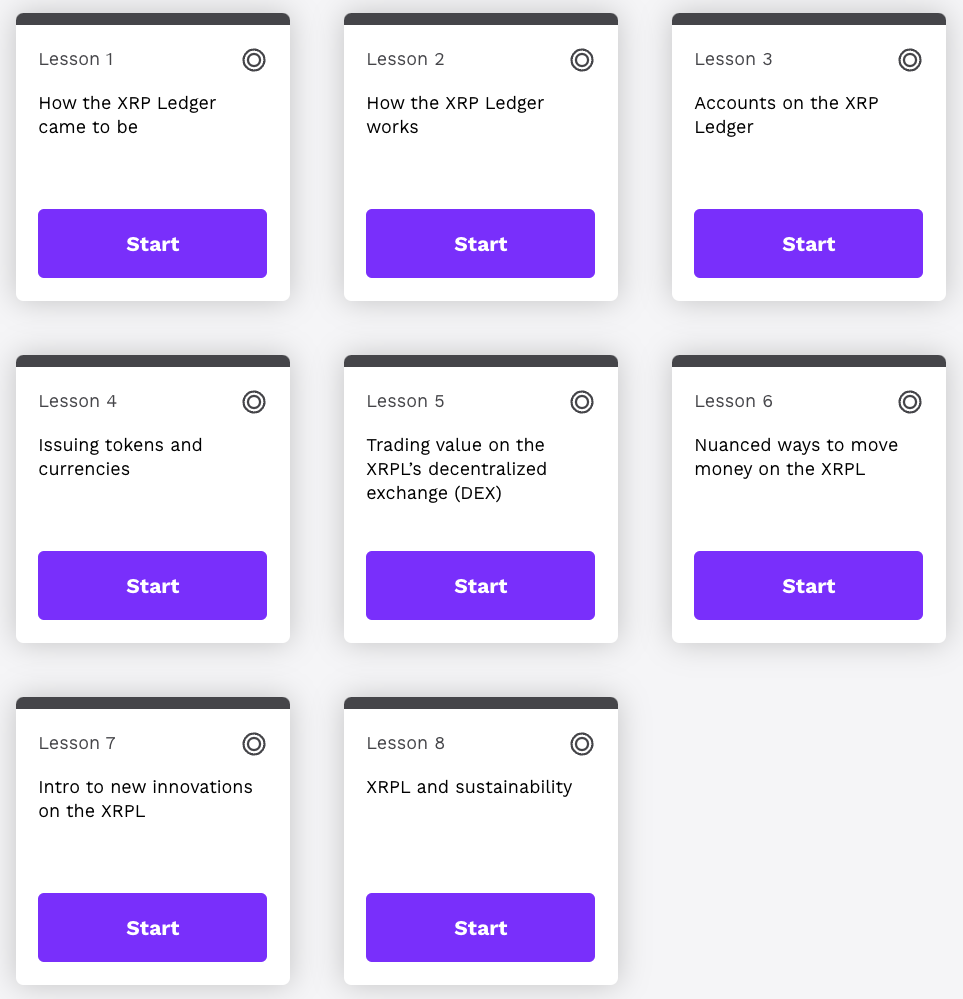On Wednesday (1 February 2023), RippleX, the team within Ripple that tries to provide XRP Ledger (XRPL) developers with all the resources they need to build solutions that “fuel the engine of a new digital economy,” wrote about the XRPL Learning Portal.
The XRP Ledger was created in 2012 by David Schwartz, Jed McCaleb, and Arthur Britto.
Ripple describes RippleX as “a team that champions the builders of tomorrow by providing XRPL developers the infrastructure, tools, services, programs, and support that helps them to advance the solutions and innovation needed to enable businesses, consumers, institutions and governments to fuel the engine of a new digital economy.” RippleX works with the XRPL community to “propose technology upgrades, host events, sponsor hackathons and more.”
On 3 October 2022, Ripple introduced the XRP Ledger Learning Portal, which it describes as “a learning tool that simplifies the learning experience for developers wanting to start building.”
In a blog post published on the XRPL website, Ripple wrote:
“While XRPL.org serves as a central, robust portal for developers of all experience levels to learn about the XRP Ledger, new developers or even those well-versed in Web 3 face a higher barrier to entry when getting started with a new blockchain… The XRPL Learning Portal offers an easy and interactive way for developers to start their Web 3 journey. Developers can create their learning paths—whether they start by getting acquainted with the basics of crypto and blockchain or jump right into learning how to code on the XRP Ledger.
“Portal users can explore educational material explaining the XRP Ledger and the many use cases it supports, such as decentralized finance (DeFi) and gaming. At the same time, developers will gain an understanding of the XRP Ledger’s core features, history and mechanics through hands-on learning modules. Because the XRP Ledger is a scalable, carbon-neutral blockchain, a sustainable future theme underpins each course…
“The XRPL Learning Portal was designed for developers to navigate their understanding of blockchain and the XRP Ledger at their own pace, with courses catering to Beginner and Intermediate-level developers. At the beginner level, the XRPL Learning Portal explores topics such as, ‘What is cryptocurrency?’ or ‘What are smart contracts?’ Courses range from 90 to 120 minutes to complete and aim to ease the learning curve for developers looking to start building on XRPL.“
These are the course currently available:

One of these courses that could be of interest to all XRP HODLers is the beginner-level 90-minute course “Intro to the XRPL”, which consists of eight lessons:

On 24 August 2022, Binance Academy, which is the educational arm of Binance and was officially launched on 11 December 2018, released a video about XRP — titled “What Is XRP Ledger (XRPL)?| Explained for Beginners” — on its YouTube channel.
Here are a few things that this video points out about XRPL and XRP:
- “XRPL is a decentralised public blockchain built with the purpose to enable a world where tokenized value is exchanged as quickly as information. The XRPL is stable, scalable, fast, and energy-efficient. It has continuously confirmed transactions since its deployment in 2012 while supporting more than 1500 transactions per second and transaction speeds of three to five seconds.“
- “Transactions are cheap. The average transaction cost on the XRPL is less than a fraction of a penny.“
- “The XRPL is friendly to our planet. It is the first major blockchain to be certifiably carbon-neutral.“
- “The network uses a federated consensus protocol to confirm transactions in which designated independent servers known as validators must come to an agreement on the order and outcome of XRP transactions. All verified transactions are processed without a single point of failure as no single participant can decide which transactions take priority.“
- “The cryptocurrency native to the XRP Ledger is XRP, a neutral bridge asset that is optimised for payments anywhere. With billions of XRP traded daily, XRP functions as a medium of exchange to facilitate cross-border payments quickly, cheaply, and sustainably. It can also be used to transact on XRP Ledger’s decentralised exchange (DEX) or engage with tokenized assets.“
- “The main applications of the XRP Ledger are payments. Using the XRP Ledger, assets can be moved across the world, enabling near instant money transfers for remittances, treasury payments, payrolls, and other cross-border payments.“









